Abstract
During the past few years Anopheles balabacensis has come to be recognized as a very important human malaria vector in Thailand and the Indochinese area, but little has been published on its bionomics except from North Borneo.
Studies of the feeding habits of A. balabacensis in Cambodia showed it to be predominantly a forest mosquito. It was readily attracted to monkeys in the forest canopy but also readily attacked man on the ground. Very few of this species were attracted to domestic animals. Malaria infections were found more frequently in mosquitos captured in villages, but a significant number were infected from the forest beyond flight range of human habitation.
The human population showed a high percentage of persons infected with malaria, Plasmodium falciparum predominating. Cambodian monkeys were found also to be infected with P. cynomolgi. Although none of thirteen monkeys injected with sporozoites from wild-caught mosquitos came down with malaria, it was concluded that A. balabacensis probably was the vector of both human and monkey malaria and that the risk of cross-infection was considerable if monkey malarias infective to man exist in the area.
Full text
PDF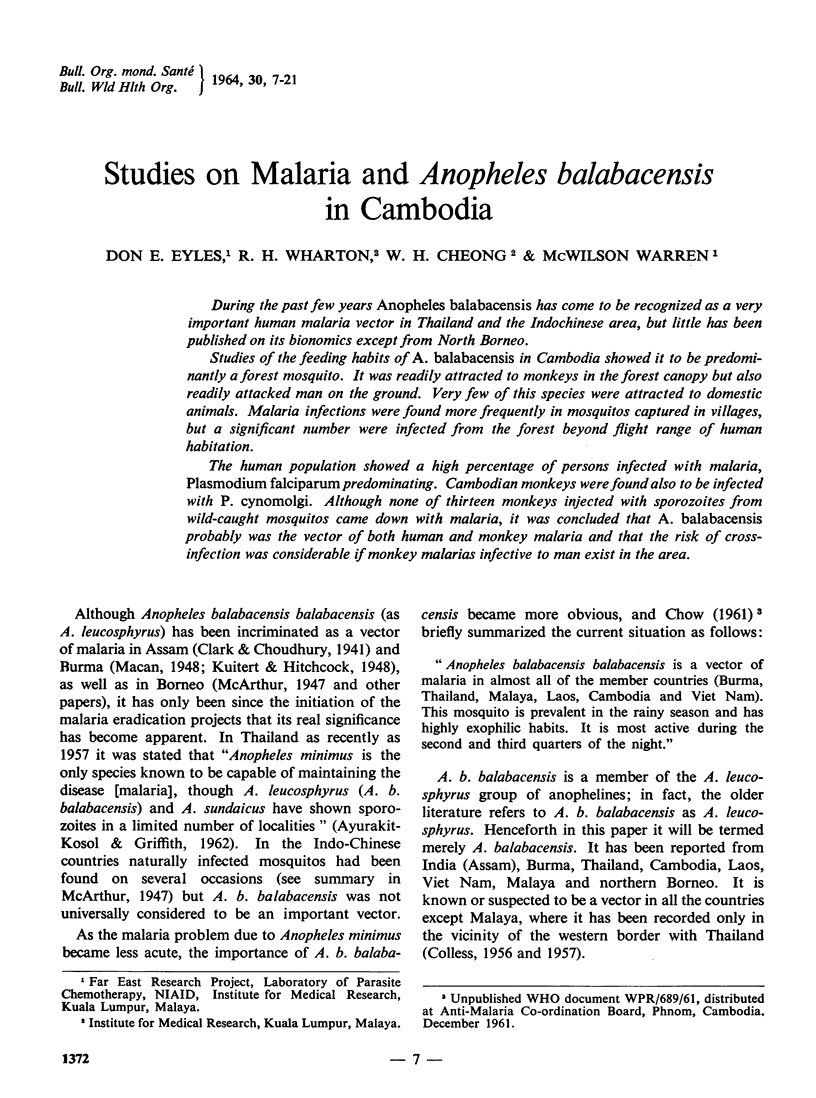
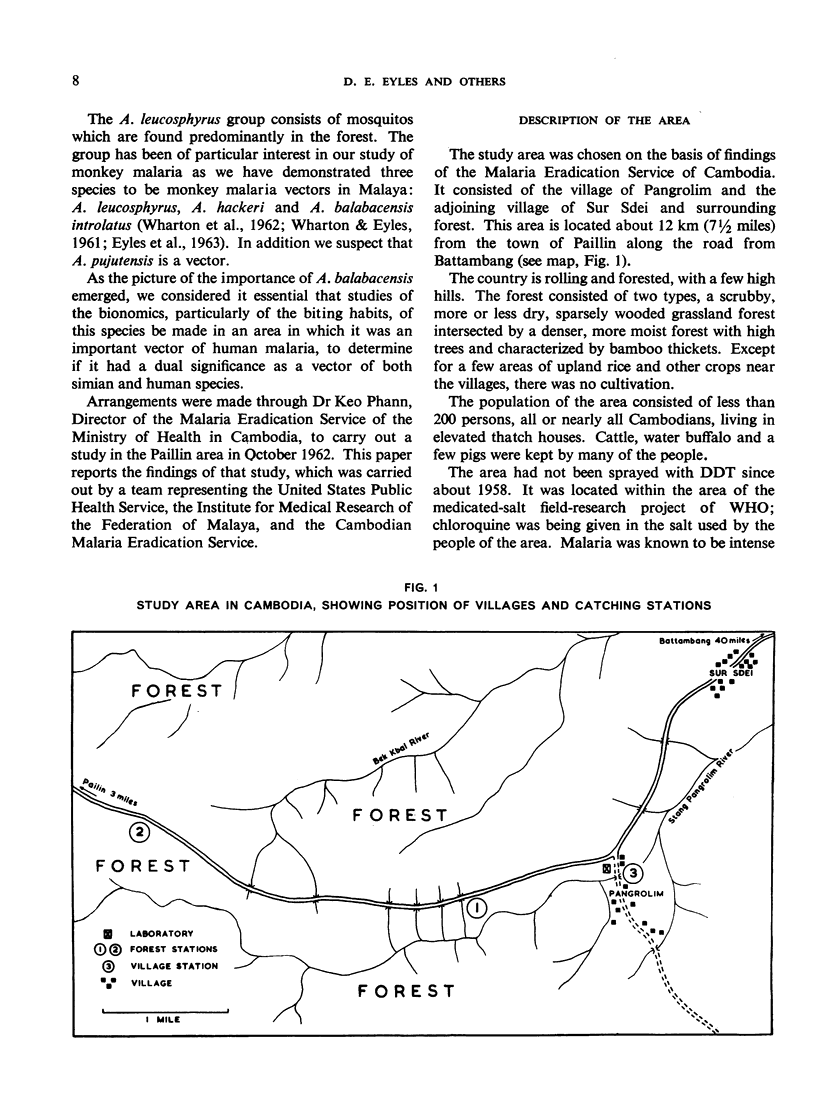
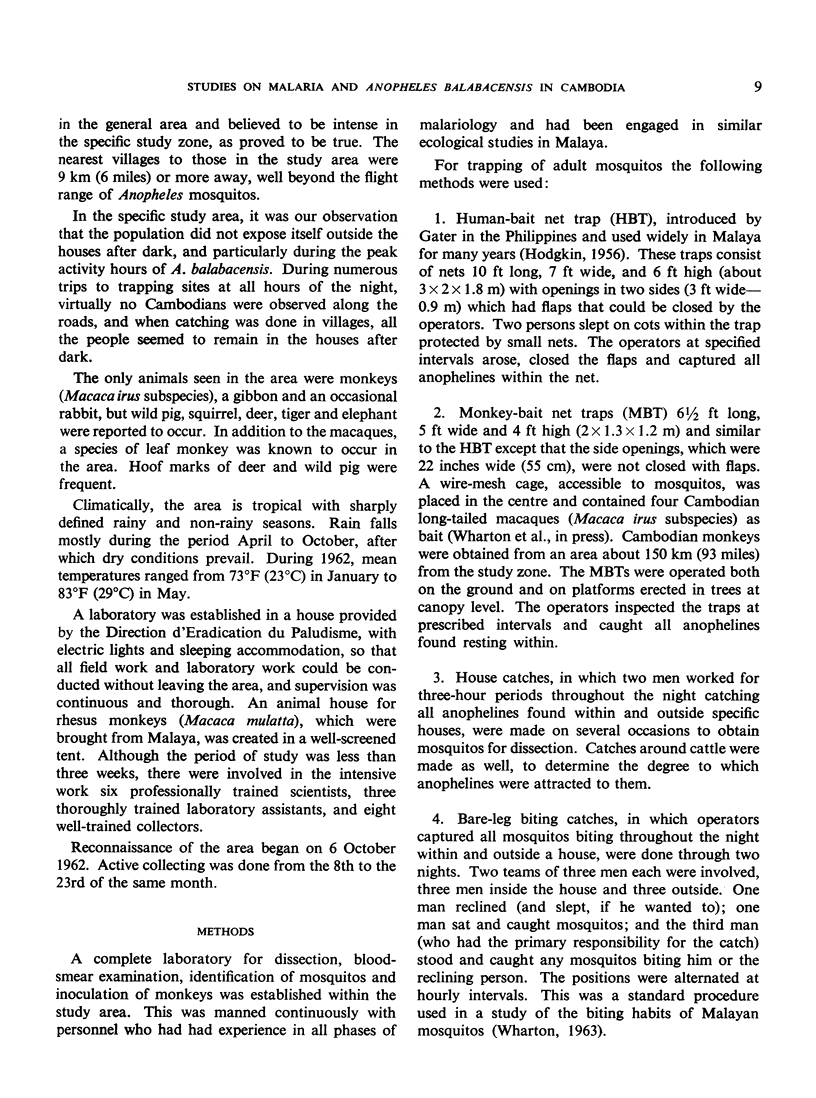
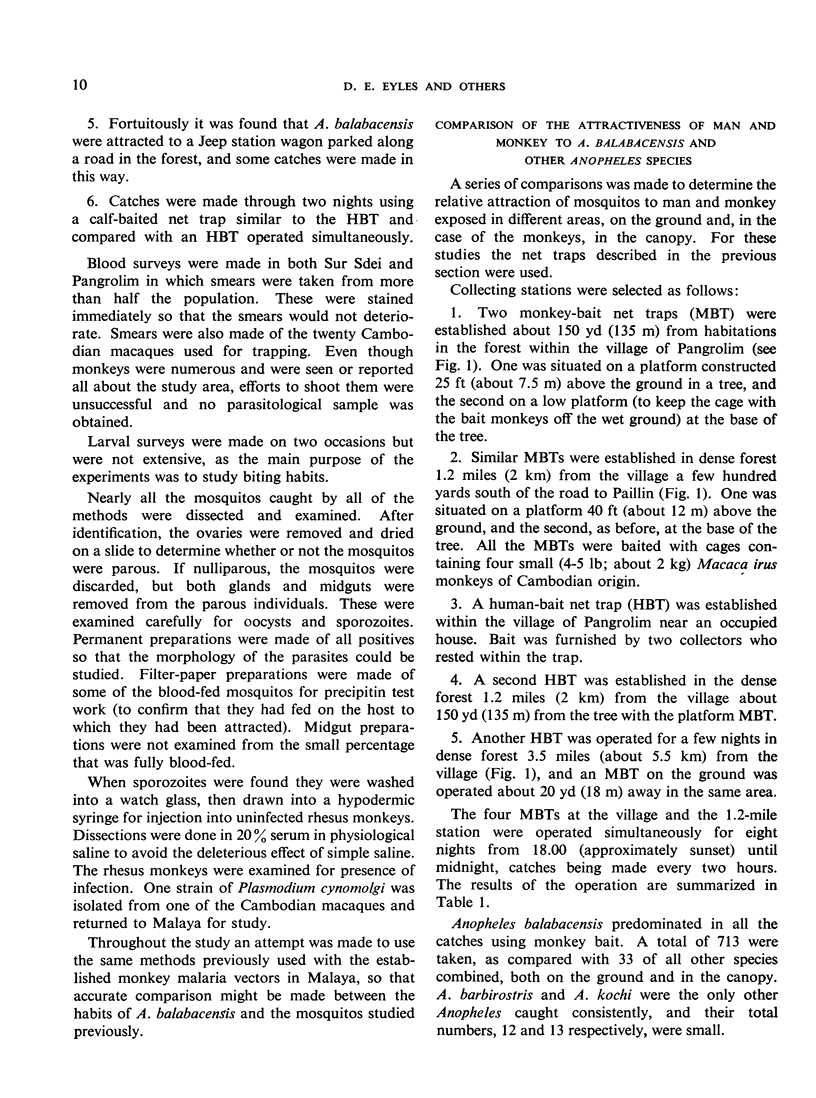
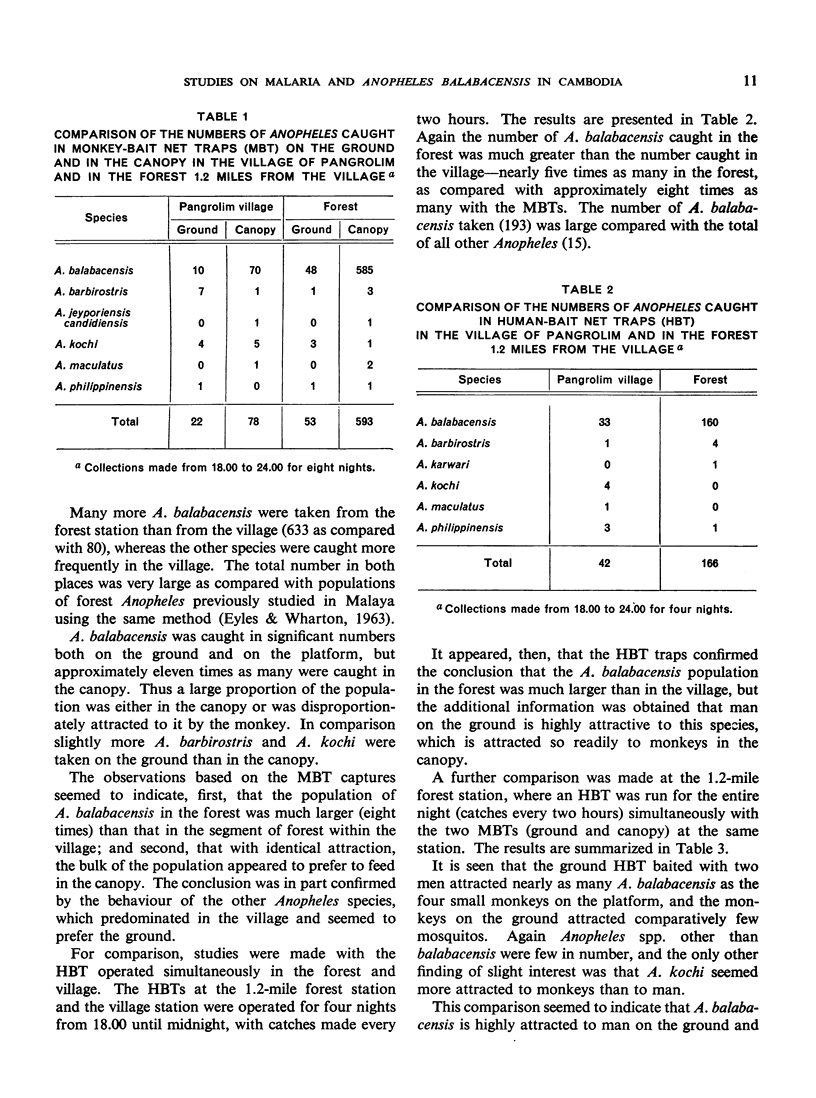
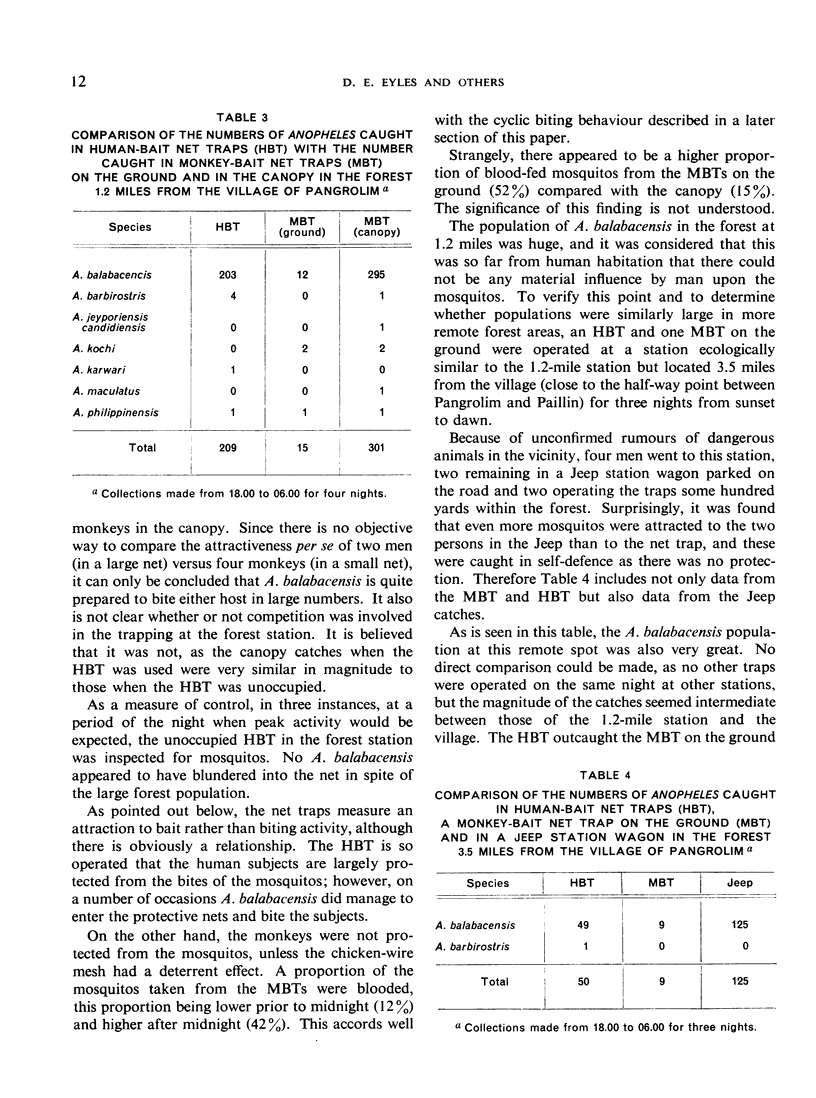
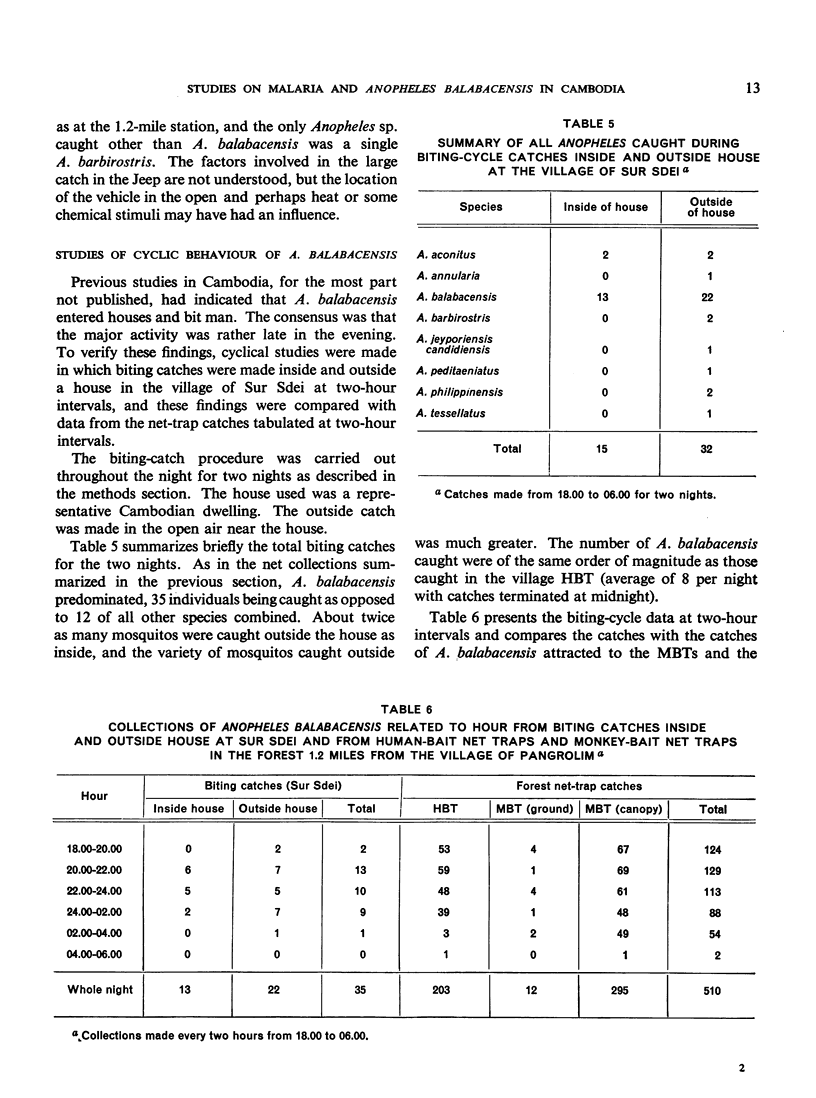
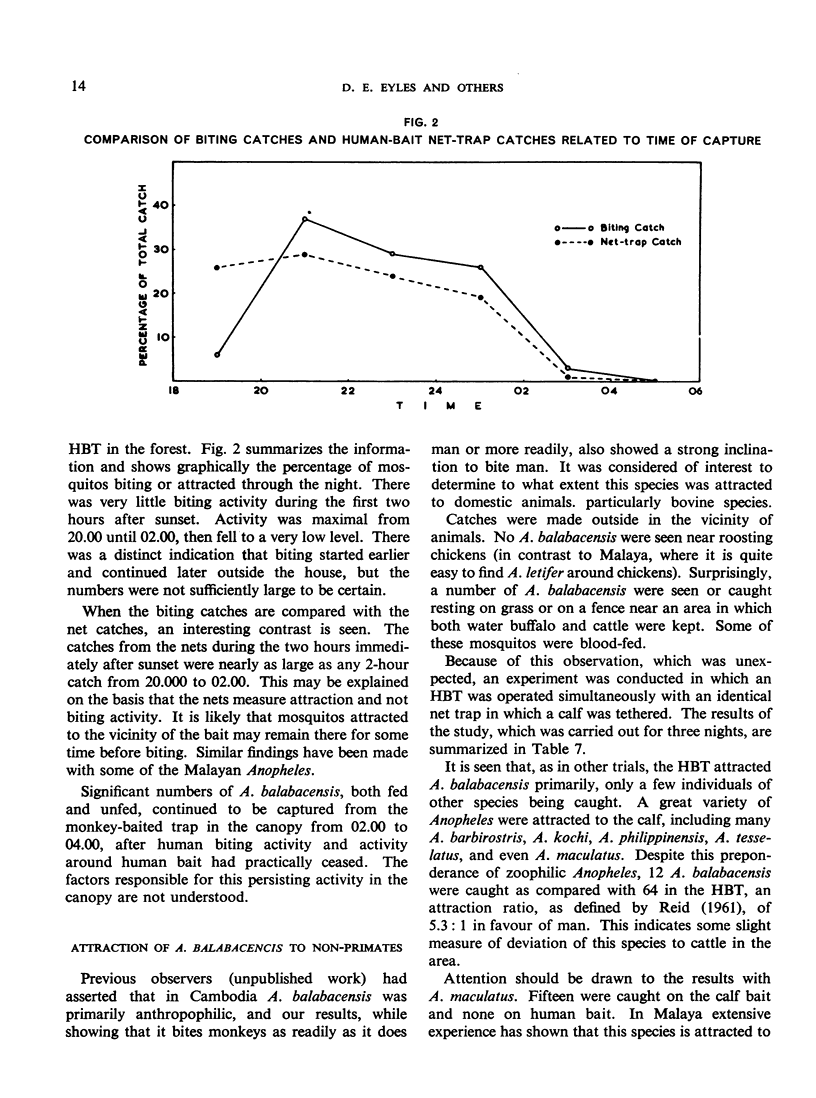
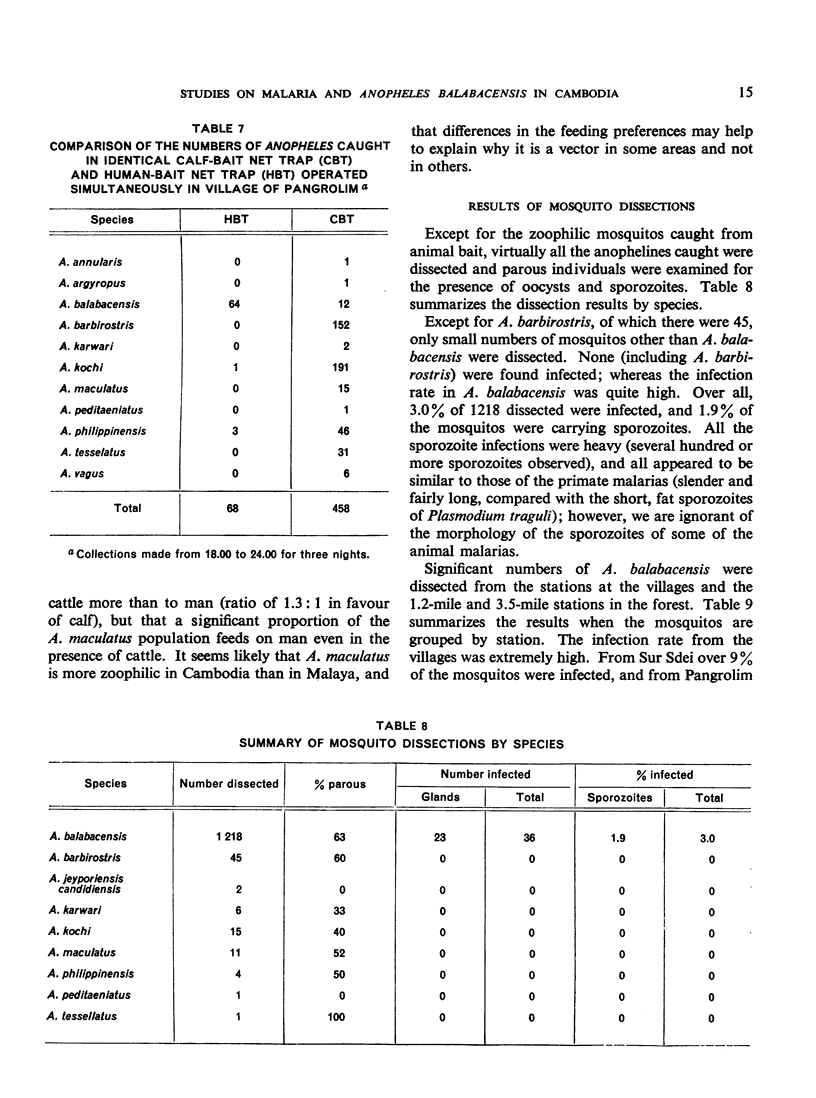
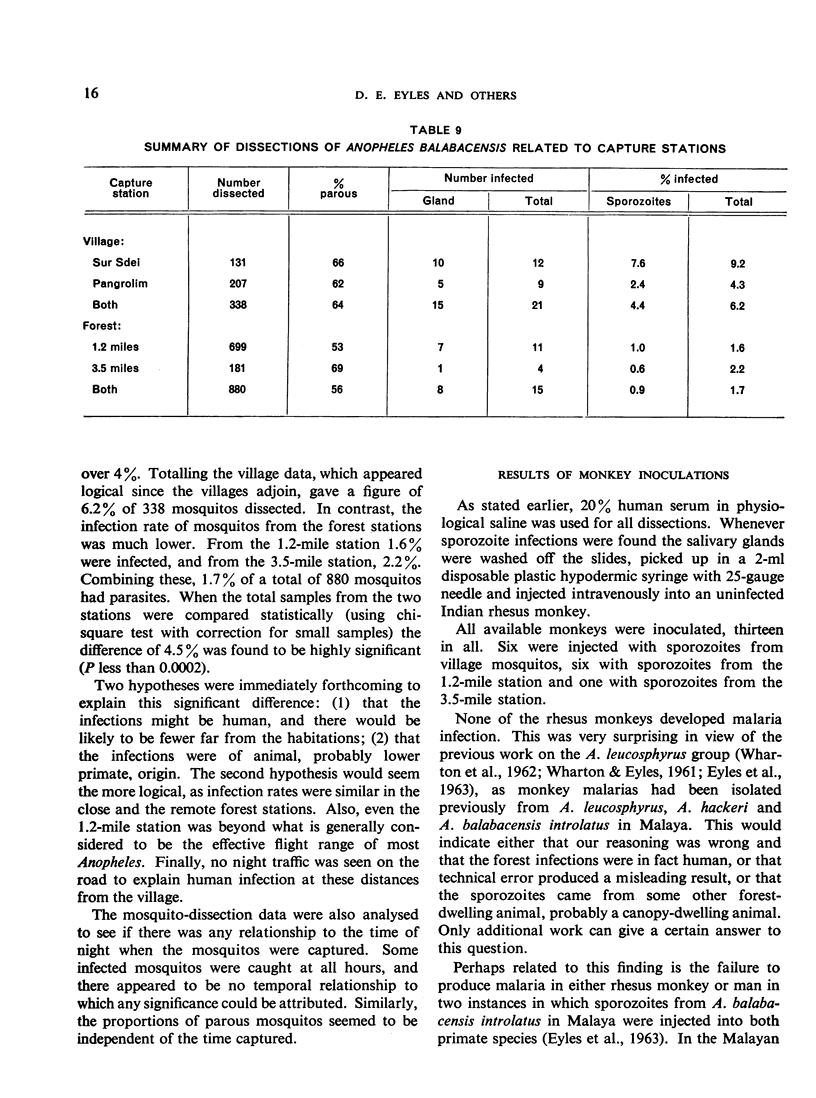
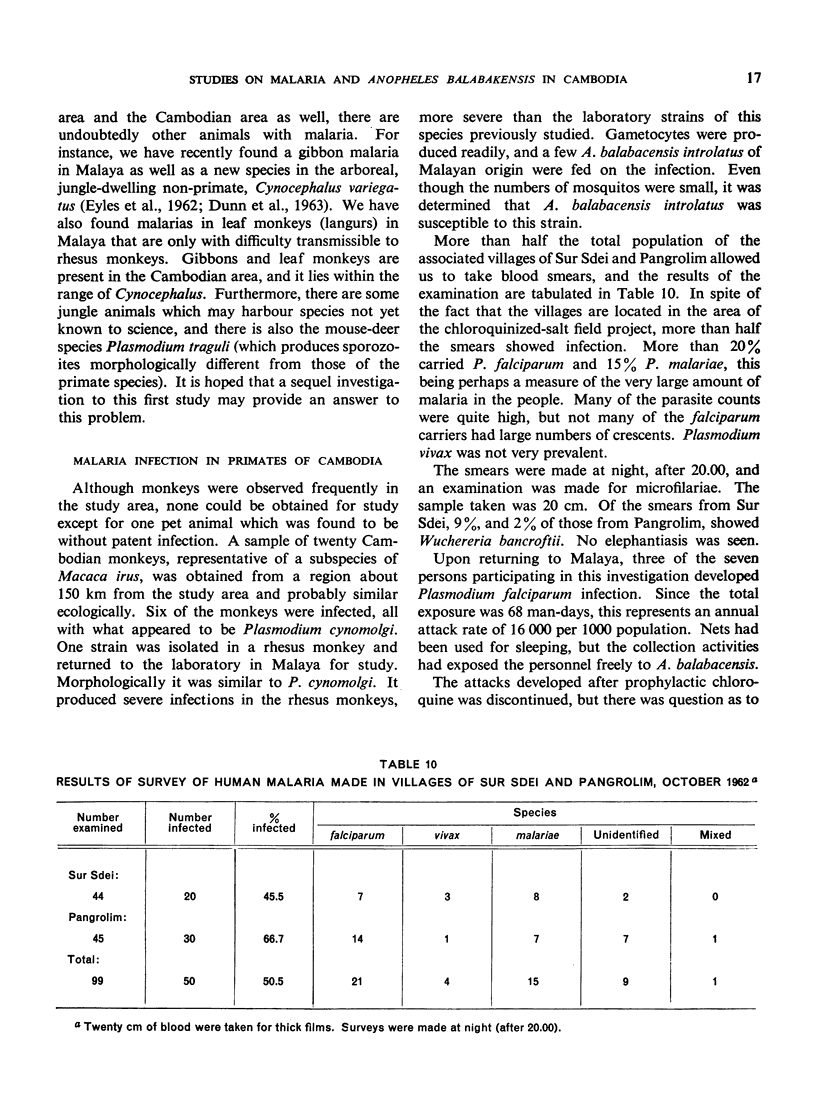
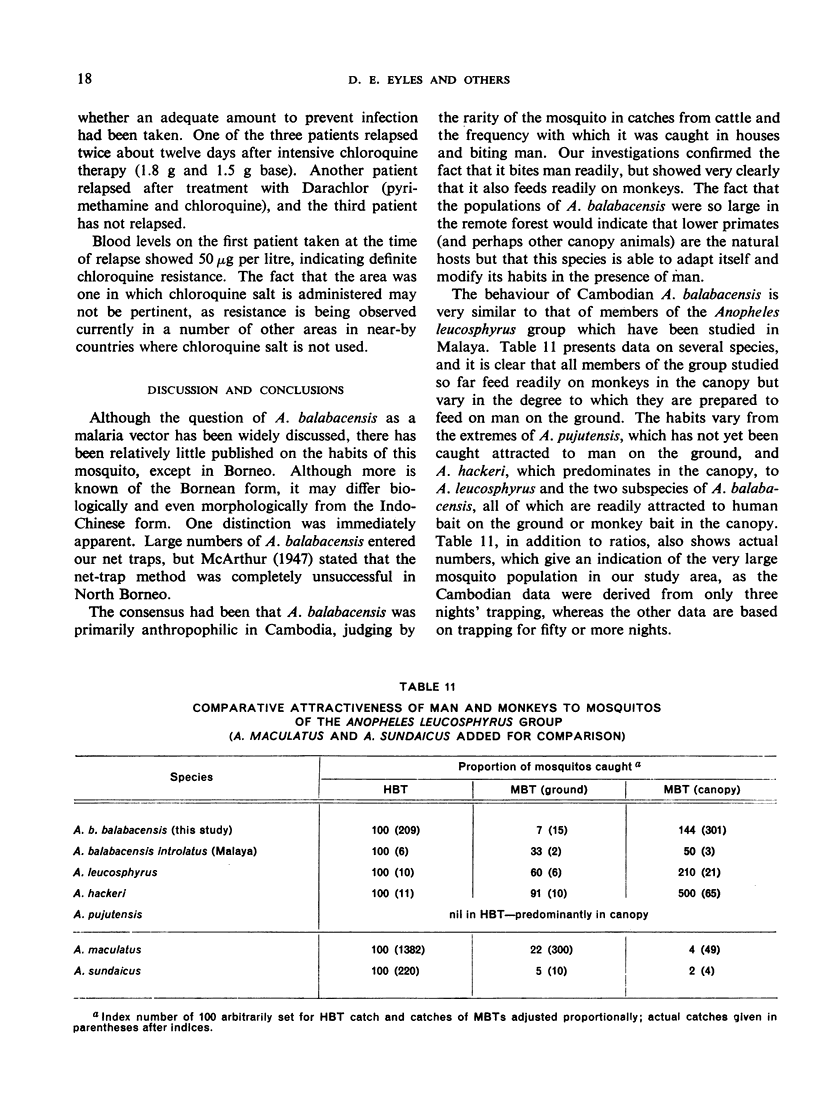
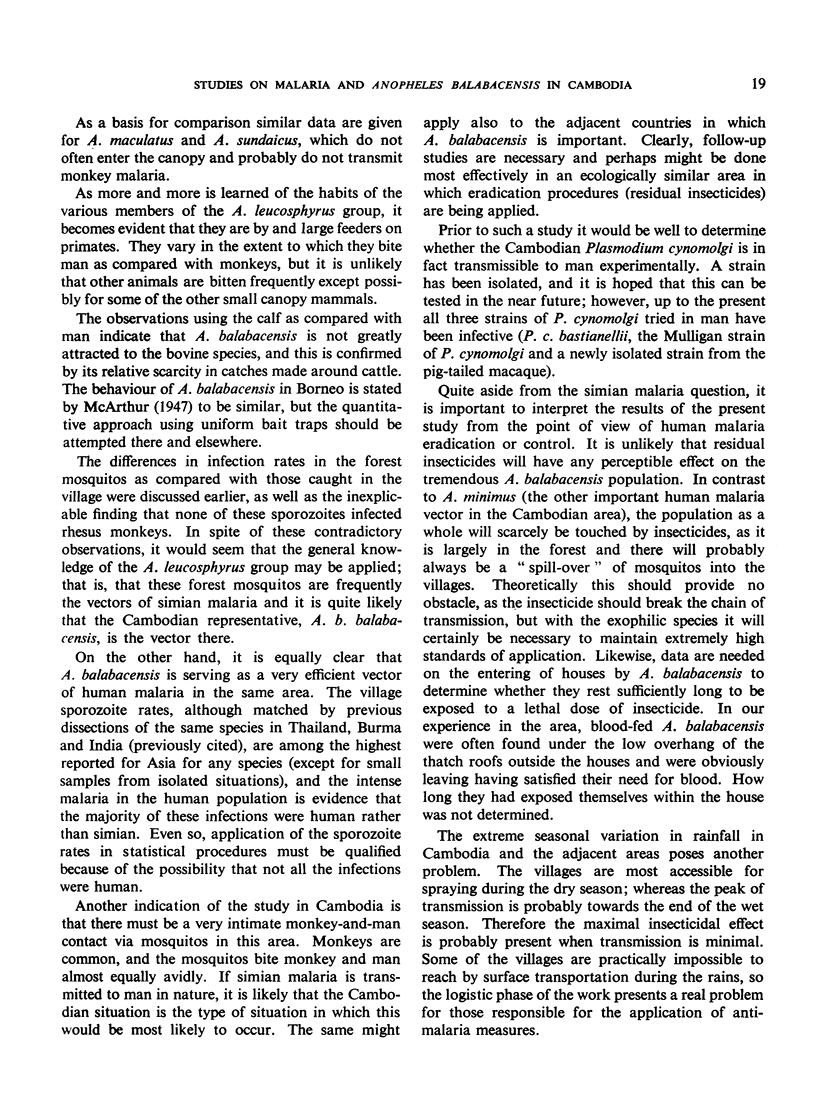
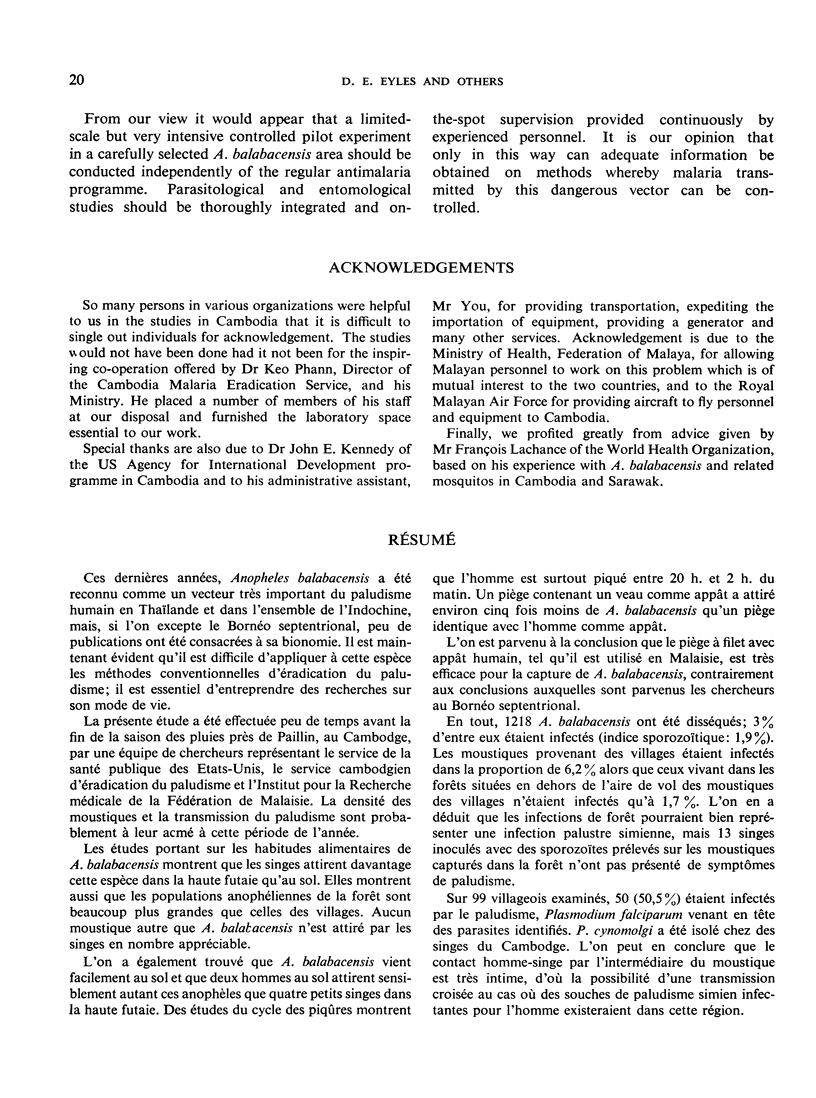
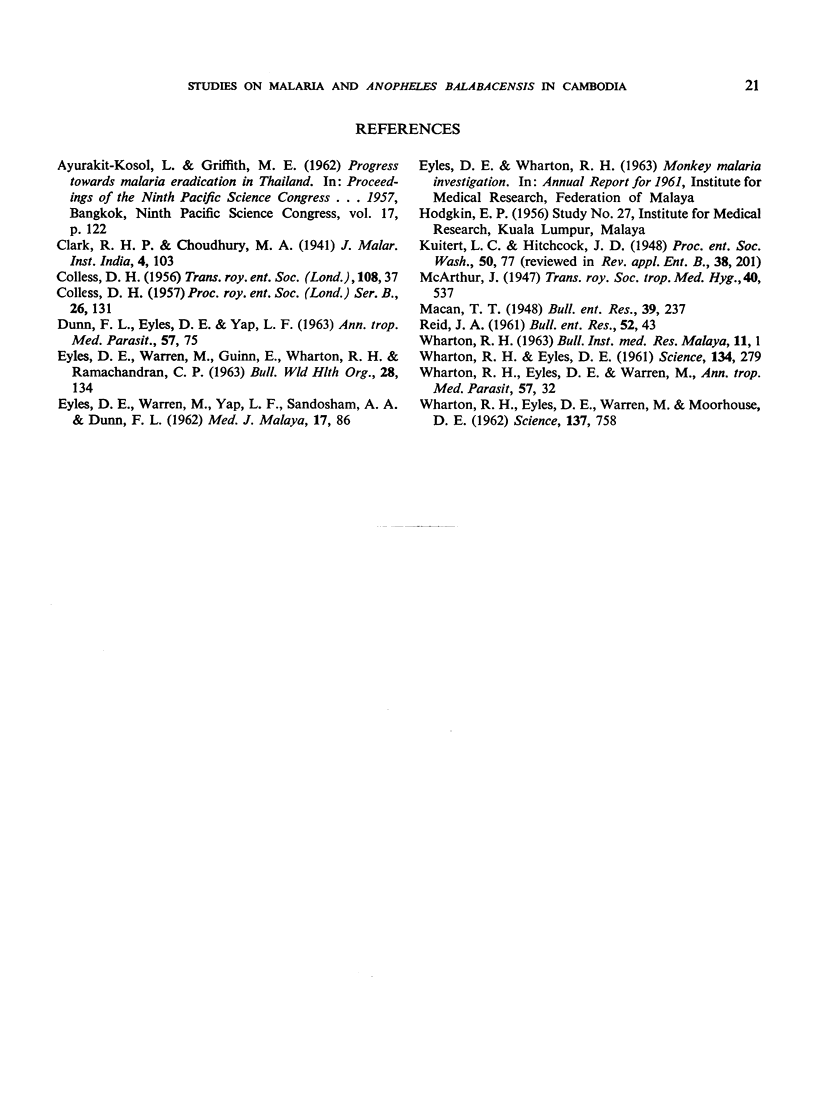
Selected References
These references are in PubMed. This may not be the complete list of references from this article.
- EYLES D. E., WARREN M., GUINN E., WHARTON R. H., RAMACHANDRAN C. P. IDENTIFICATION OF ANOPHELES BALABACENSIS INTROLATUS AS A VECTOR OF MONKEY MALARIA IN MALAYA. Bull World Health Organ. 1963;28(1):134–135. [PMC free article] [PubMed] [Google Scholar]
- WHARTON R. H., EYLES D. E. Anopheles hackeri, a vector of Plasmodium knowlesi in Malaya. Science. 1961 Jul 28;134(3474):279–280. doi: 10.1126/science.134.3474.279. [DOI] [PubMed] [Google Scholar]
- WHARTON R. H., EYLES D. E., WARREN M., MOORHOUSE D. E. Anopheles leucosphyrus identified as a vector of monkey malaria in Malaya. Science. 1962 Sep 7;137(3532):758–758. doi: 10.1126/science.137.3532.758. [DOI] [PubMed] [Google Scholar]


